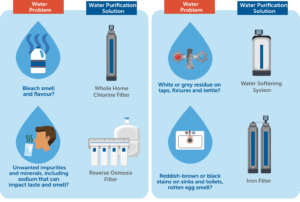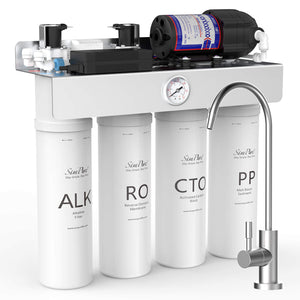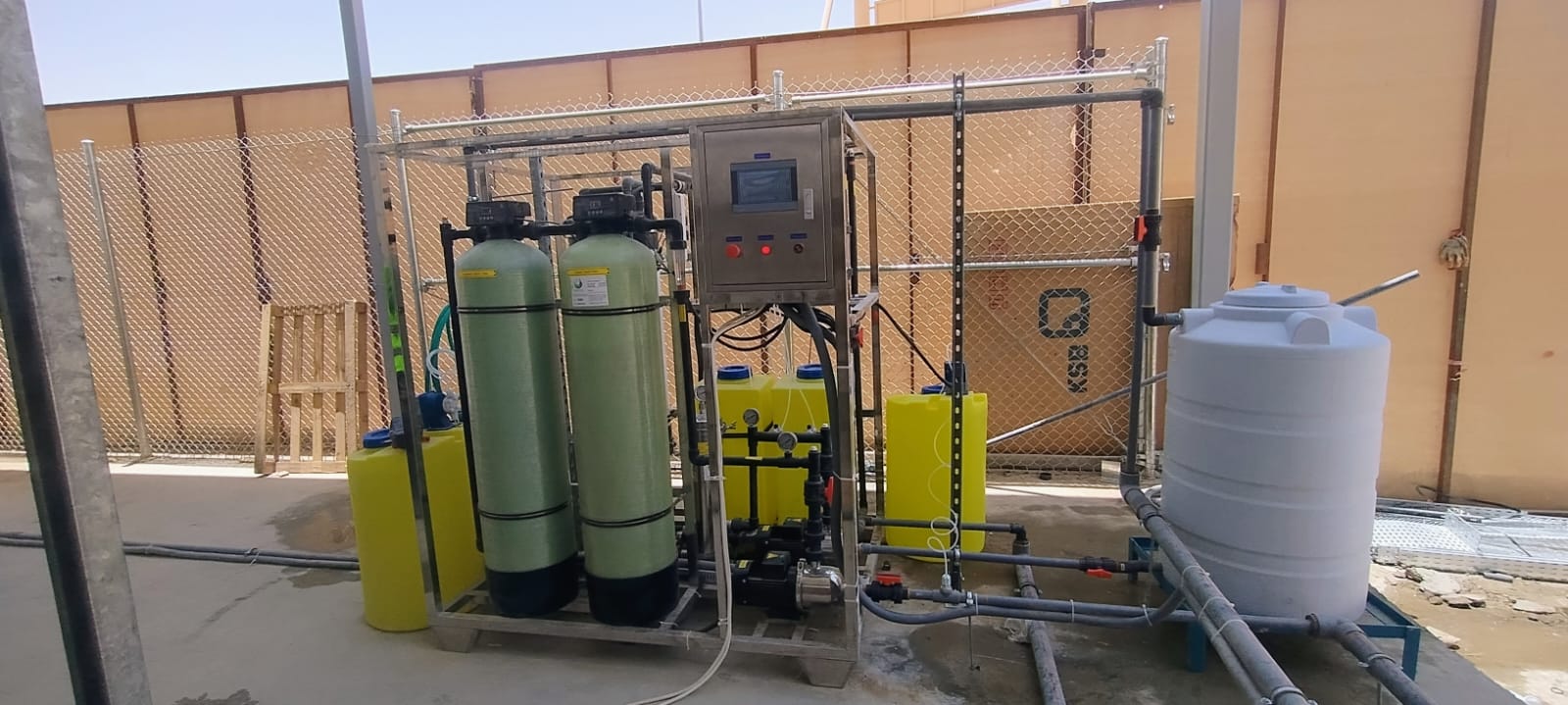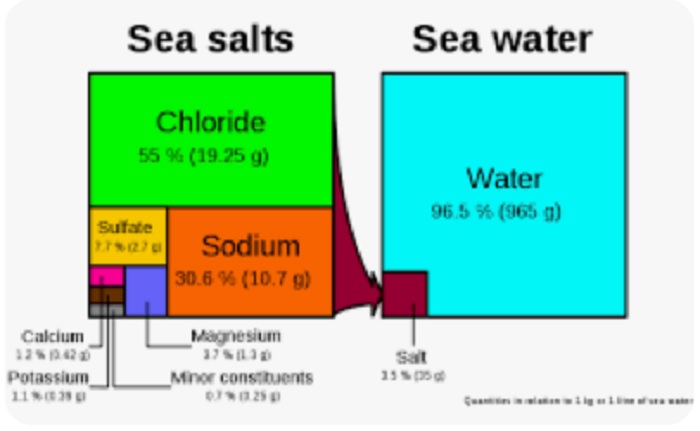Have you ever wondered if purifying salt water can give you more fresh water? If you’re facing water shortages or just curious about how salt water treatment works, this question matters a lot.
You might think that cleaning salty water simply means getting more water to drink or use. But the process is more complex—and understanding it can change how you see water treatment altogether. Keep reading to discover what really happens when salt water is purified and whether it actually results in more usable water for you.

Credit: reliancehomecomfort.com
Basics Of Salt Water
Salt water is water that contains a lot of salt. It is different from fresh water, which has very little salt.
Understanding salt water helps us learn about oceans, seas, and how water can be purified.
Composition Of Salt Water
Salt water is mostly water, but it also has many minerals and salts dissolved in it. The main salt is sodium chloride, which is common table salt.
Other minerals in salt water include magnesium, calcium, and potassium. These salts give salt water its salty taste.
- Water (H2O) makes up about 96.5% of salt water
- Sodium chloride (NaCl) is the largest salt part
- Magnesium, calcium, and potassium are smaller parts
Sources Of Salt Water
Salt water mainly comes from oceans and seas. These large bodies of water cover most of the Earth’s surface.
Salt water can also be found in some lakes and underground reservoirs. These sources have higher salt levels than fresh water.
- Oceans and seas are the biggest sources
- Saltwater lakes have natural salt deposits
- Some underground water contains salt

Credit: www.simpurelife.com
Methods To Purify Salt Water
Salt water contains salt and other minerals that make it unsafe to drink. Purifying salt water removes these salts and makes the water usable. There are several ways to purify salt water.
Each method uses a different process to separate salt from the water. These methods help turn salt water into fresh water for drinking and other uses.
Distillation Process
Distillation uses heat to purify salt water. The water is boiled until it turns into steam. Salt and other minerals stay behind because they do not evaporate.
The steam is then cooled down and collected as fresh water. This process removes salt and many impurities. It is simple but needs a heat source and takes time.
- Boil salt water to create steam
- Collect the steam and cool it down
- Gather fresh water free from salt
Reverse Osmosis Technique
Reverse osmosis forces salt water through a special filter called a membrane. This membrane allows only water molecules to pass and blocks salt and other particles.
This method uses pressure to push water through the membrane. It is effective and common for purifying large amounts of salt water. It needs electricity to work.
- Apply pressure to salt water
- Push water through a membrane filter
- Collect fresh water without salt
Solar Desalination
Solar desalination uses the sun’s energy to purify salt water. Sunlight heats the water and causes evaporation. The water vapor then condenses as fresh water.
This method is simple and uses no fuel or electricity. It works well in sunny places but takes longer than other methods. It is good for small amounts of water.
- Use sunlight to heat salt water
- Capture evaporated water as fresh water
- Use simple tools like plastic covers or solar stills
Water Quantity After Purification
Purifying salt water changes the amount of usable water. The process removes salt and impurities. This affects how much fresh water you get.
Understanding water quantity after purification helps in planning water use. Different methods give different water amounts.
Water Yield In Different Methods
Each purification method produces a different amount of fresh water. Some methods lose more water than others. The yield depends on the technique and equipment.
- Distillation removes salt by boiling and condensing. It gives moderate water yield.
- Reverse osmosis uses pressure to push water through membranes. It has higher water yield.
- Solar desalination uses sunlight to evaporate water. It produces less water but uses no power.
Loss Factors During Purification
Water loss happens during purification. Some water evaporates or stays with salt and waste. This lowers the final water amount.
- Evaporation loss occurs when water turns to steam and escapes.
- Membrane fouling reduces water flow in reverse osmosis.
- Brine discharge contains leftover salt water and reduces yield.
- System leaks or spills cause extra water loss.
Energy And Cost Implications
Purifying salt water can increase the amount of usable water. This process needs energy and costs money. It is important to know how much energy is used and if the cost is worth it.
Understanding energy and cost helps decide if purifying salt water is a good option. This is useful for homes, businesses, and governments.
Energy Consumption In Purification
Purifying salt water uses machines that need electricity or fuel. These machines remove salt and other minerals to make water clean. The amount of energy used depends on the method and water quality.
Common methods like reverse osmosis use high pressure to filter salt. This needs a lot of power. Solar energy can reduce costs but may not always be available.
- Reverse osmosis uses 3-10 kWh per cubic meter of water
- Thermal distillation uses more energy than filtration
- Energy use rises with salt concentration in water
- Renewable energy can lower energy costs
Economic Feasibility
Purifying salt water can be expensive. Costs include energy, equipment, and maintenance. The price of clean water must be less than alternatives for it to be practical.
Large plants lower costs with scale. Small setups may have higher prices per liter. Government support and subsidies can improve economic feasibility.
- Initial setup cost can be high
- Energy costs are a large part of total expenses
- Larger plants reduce cost per liter
- Subsidies and grants help reduce financial burden
Environmental Impact
Purifying salt water creates fresh water from seawater or brine. This process helps solve water shortages. It also has effects on the environment that we must understand.
When purifying salt water, the leftover salt and chemicals need careful handling. The impact on marine life and ecosystems is important to consider for sustainability.
Waste Salt Management
Purifying salt water produces concentrated salt waste called brine. Brine is salty and can harm the environment if not managed properly. Safe disposal methods are needed to reduce damage.
Some ways to manage waste salt include evaporation ponds, salt recovery, and deep well injection. These methods help reduce salt pollution and reuse some materials.
- Evaporation ponds let brine dry up naturally
- Salt recovery turns brine into usable salt products
- Deep well injection stores brine deep underground
Effects On Marine Ecosystems
Brine released into the ocean can increase water salt levels. Higher salinity can hurt fish, plants, and other sea animals. It changes their living conditions and food sources.
Careful control of brine release is needed to protect marine ecosystems. Using proper dilution and mixing can reduce harm. Monitoring helps catch problems early.
Applications Of Purified Water
Purified water is water that has been cleaned by removing salt and impurities. It is useful in many areas of life and work.
Using purified water helps improve health, farming, and industries. It is important for daily needs and production.
Drinking Water Supply
Purified water provides safe drinking water to people. It removes harmful salt and germs that can cause sickness.
Many places use purified water to meet clean water needs. This helps reduce diseases and keeps communities healthy.
Agricultural Uses
Farmers use purified water to grow crops. Salt in water can harm plants, so clean water helps crops grow better.
Using purified water also helps improve soil quality. It supports healthy plant growth and increases food production.
- Irrigation without salt damage
- Healthier plants and higher yields
- Better soil condition for farming
Industrial Uses
Industries need purified water for many processes. Salt and impurities can damage machines and affect product quality.
Using purified water helps industries work smoothly. It is used in cooling, cleaning, and making products like medicines and food.
- Cooling systems without corrosion
- Clean water for product making
- Protecting machines from salt damage
Future Innovations
Purifying salt water can create more fresh water for people and farms. Scientists are working on new ideas to make this process better.
These future innovations aim to save energy and speed up water cleaning. They will help provide clean water in dry areas.
Emerging Technologies
New technologies use smart materials and better machines to clean salt water. These include filters that work faster and use less power.
Some methods use solar energy to run water purifiers. Others use tiny sensors to watch water quality in real-time.
- Solar-powered desalination plants
- Graphene filters for faster water flow
- Real-time water quality sensors
- Energy-saving membranes
Improving Efficiency
Scientists focus on reducing energy use to make salt water cleaning cheaper. Using less power helps more places get fresh water.
They also work to speed up how fast water is purified. Faster systems can supply more clean water every day.
- Lower energy consumption
- Faster purification cycles
- Durable and easy-to-clean filters
- Automated systems for less human work

Credit: carewater.solutions
Frequently Asked Questions
Can Purifying Salt Water Increase Water Supply?
Purifying salt water can increase the available fresh water supply. Desalination processes remove salt and impurities, making it suitable for consumption. This can be particularly beneficial for areas with limited freshwater resources. However, the process can be energy-intensive and costly, which may limit its widespread application.
How Does Desalination Work?
Desalination involves removing salt from seawater to produce fresh water. The two main methods are reverse osmosis and distillation. Reverse osmosis uses a membrane to separate salt, while distillation involves heating water to create steam, leaving salt behind. Both methods are effective but have different energy requirements.
Is Desalination Environmentally Friendly?
Desalination has environmental concerns, such as high energy consumption and brine disposal. Energy-intensive processes can increase carbon emissions. Brine disposal can harm marine ecosystems if not managed properly. Advances in technology aim to reduce these impacts, making desalination more sustainable and environmentally friendly over time.
What Are The Costs Of Purifying Salt Water?
Purifying salt water can be expensive due to high energy requirements. The cost varies based on technology used and location. Desalination plants require significant investment and operational costs. However, technological advancements are reducing costs, making it a more viable option for regions facing water scarcity.
Conclusion
Purifying salt water does not create more water. It removes salt and impurities. The amount of water stays the same. This process makes water safe to drink. It helps in places with limited fresh water. Clean water means better health and daily use.
Simple steps can turn salty water into fresh water. Understanding this helps us value clean water more. Water is precious, so using it wisely matters. Purifying salt water is useful but does not add volume.

